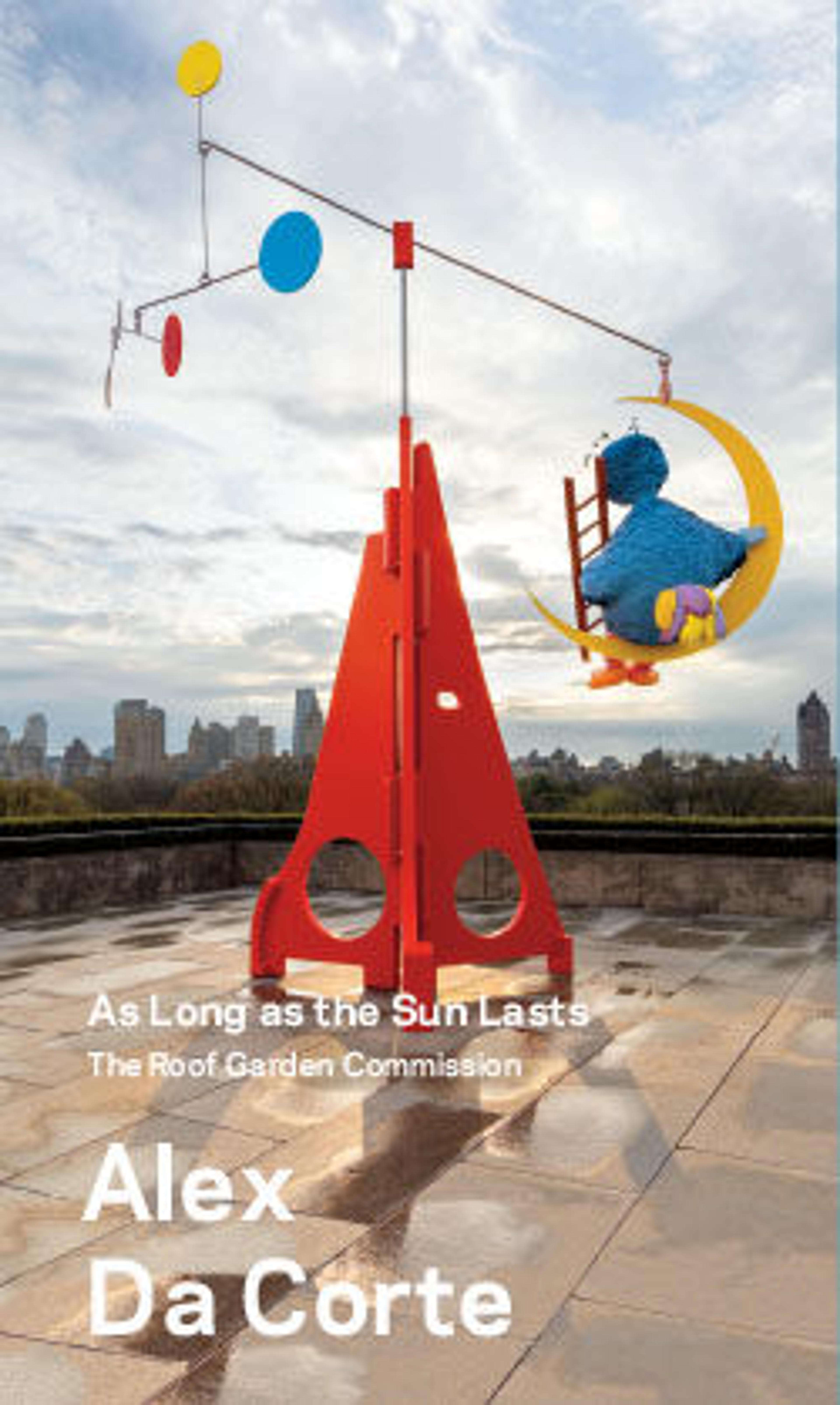The Unicorn Rests in a Garden (from the Unicorn Tapestries)
"The Unicorn Rests in a Garden" may have been created as a single image rather than part of a series. In this instance, the unicorn probably represents the beloved tamed. He is tethered to a tree and constrained by a fence, but the chain is not secure and the fence is low enough to leap over: The unicorn could escape if he wished. Clearly, however, his confinement is a happy one, to which the ripe, seed-laden pomegranates in the tree—a medieval symbol of fertility and marriage—testify. The red stains on his flank do not appear to be blood, as there are no visible wounds like those in the hunting series; rather, they represent juice dripping from bursting pomegranates above. Many of the other plants represented here, such as wild orchid, bistort, and thistle, echo this theme of marriage and procreation: they were acclaimed in the Middle Ages as fertility aids for both men and women. Even the little frog, nestled among the violets at the lower right, was cited by medieval writers for its noisy mating.
Artwork Details
- Title: The Unicorn Rests in a Garden (from the Unicorn Tapestries)
- Date: 1495–1505
- Geography: Made in Paris, France (cartoon); Made in Southern Netherlands (woven)
- Culture: French (cartoon)/South Netherlandish (woven)
- Medium: Wool warp with wool, silk, silver, and gilt wefts
- Dimensions: 12 ft. 7/8 in. × 8 ft. 3 in. (368 × 251.5 cm)
- Classification: Textiles-Tapestries
- Credit Line: Gift of John D. Rockefeller Jr., 1937
- Object Number: 37.80.6
- Curatorial Department: Medieval Art and The Cloisters
Audio
69. The Unicorn in Captivity (from the Unicorn Tapestries)
Gallery 17
The unicorn wears a highly decorative collar tied with a gold chain to a pomegranate tree. He sits comfortably on a flowery meadow, surrounded by a circular fence. On his body are drops of red juice from the pomegranates above.
There are several ways of interpreting this hanging. To many, it symbolizes Christ’s resurrection, and the red drops on his body are reminders of his Passion. Others see this as a tamed young groom, content to be bound by marriage to his love. Both the collar and the fence are circular, and have been suggested to represent the vows of marriage. The gold chain, for example, has often been compared to the “chain of love,” a motif popular in vernacular literature of this time. Of course we may also see the unicorn, simply, as a prized animal finally subdued and kept in captivity, the happy conclusion of a hunt.
Even the many plants populating the meadow offer layers of meaning both religious and secular. Take the large iris directly below the unicorn. It is often associated with the Virgin Mary-- the color of its blossoms resembles the blue garment in which she is often represented, and the sharp edges of the leaves are thought to symbolize her sorrow. There are also Madonna Lilies on the lower right—their white blooms symbolize her purity. To the left of the iris are large Carnations, a species very close to clove pinks. Because cloves resemble nails, one of the instruments used in the crucifixion, the carnation has come to be associated with Christ’s passion. There are also many plants that symbolize marriage or fertility. The pomegranate, with its many seeds, was regarded as a symbol of fertility. And the large purple orchid at the center of the tapestry was reputed to have roots that would help beget a son. And lastly, just
above the unicorn’s bent knee, you can see bistort, a plant with a pale pink flower, which was believed to help women conceive. This wealth of plant symbolism is merely one of the many reasons the Unicorn tapestries have fascinated viewers for many years.
More Artwork
Research Resources
The Met provides unparalleled resources for research and welcomes an international community of students and scholars. The Met's Open Access API is where creators and researchers can connect to the The Met collection. Open Access data and public domain images are available for unrestricted commercial and noncommercial use without permission or fee.
To request images under copyright and other restrictions, please use this Image Request form.
Feedback
We continue to research and examine historical and cultural context for objects in The Met collection. If you have comments or questions about this object record, please contact us using the form below. The Museum looks forward to receiving your comments.
